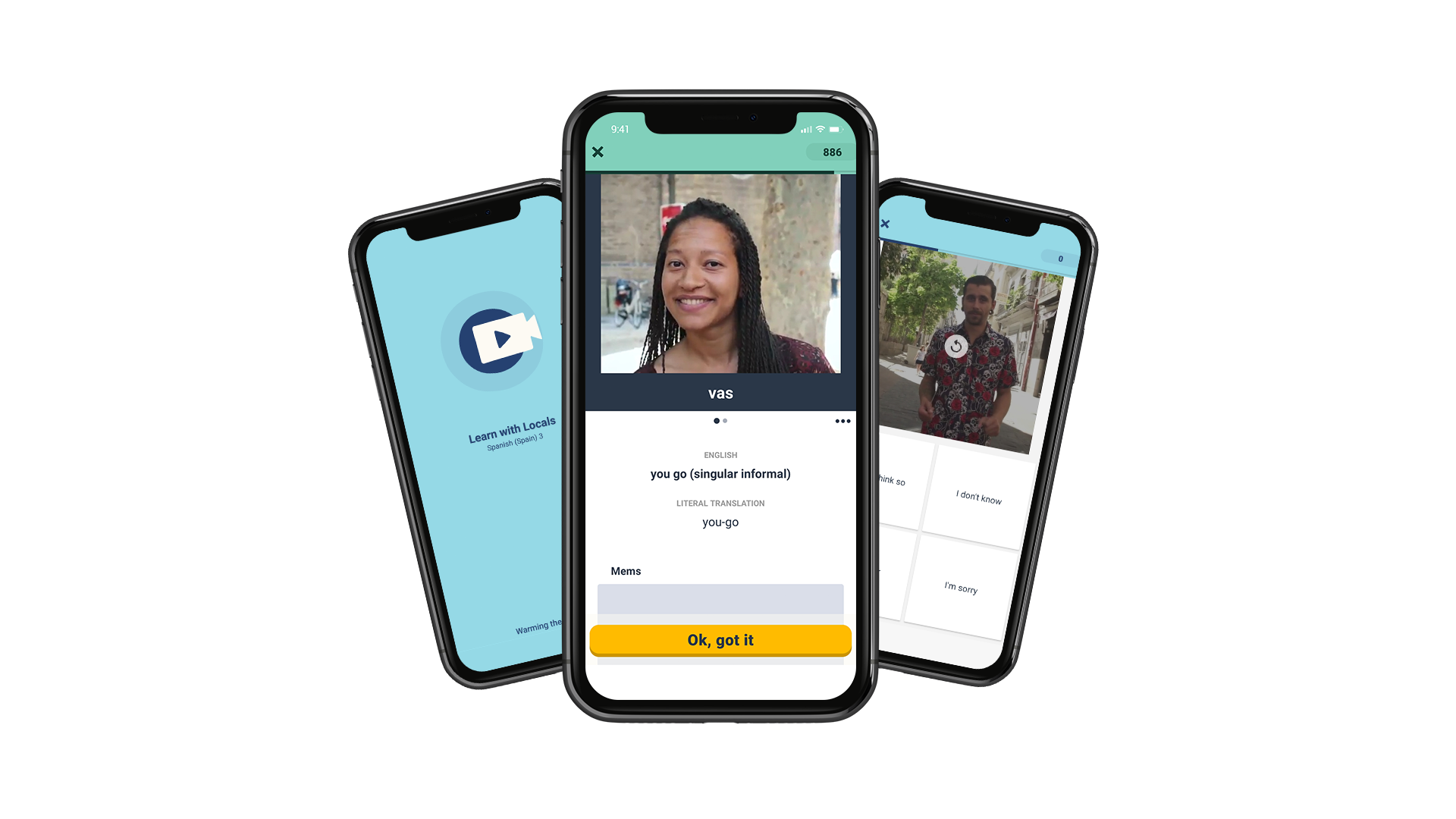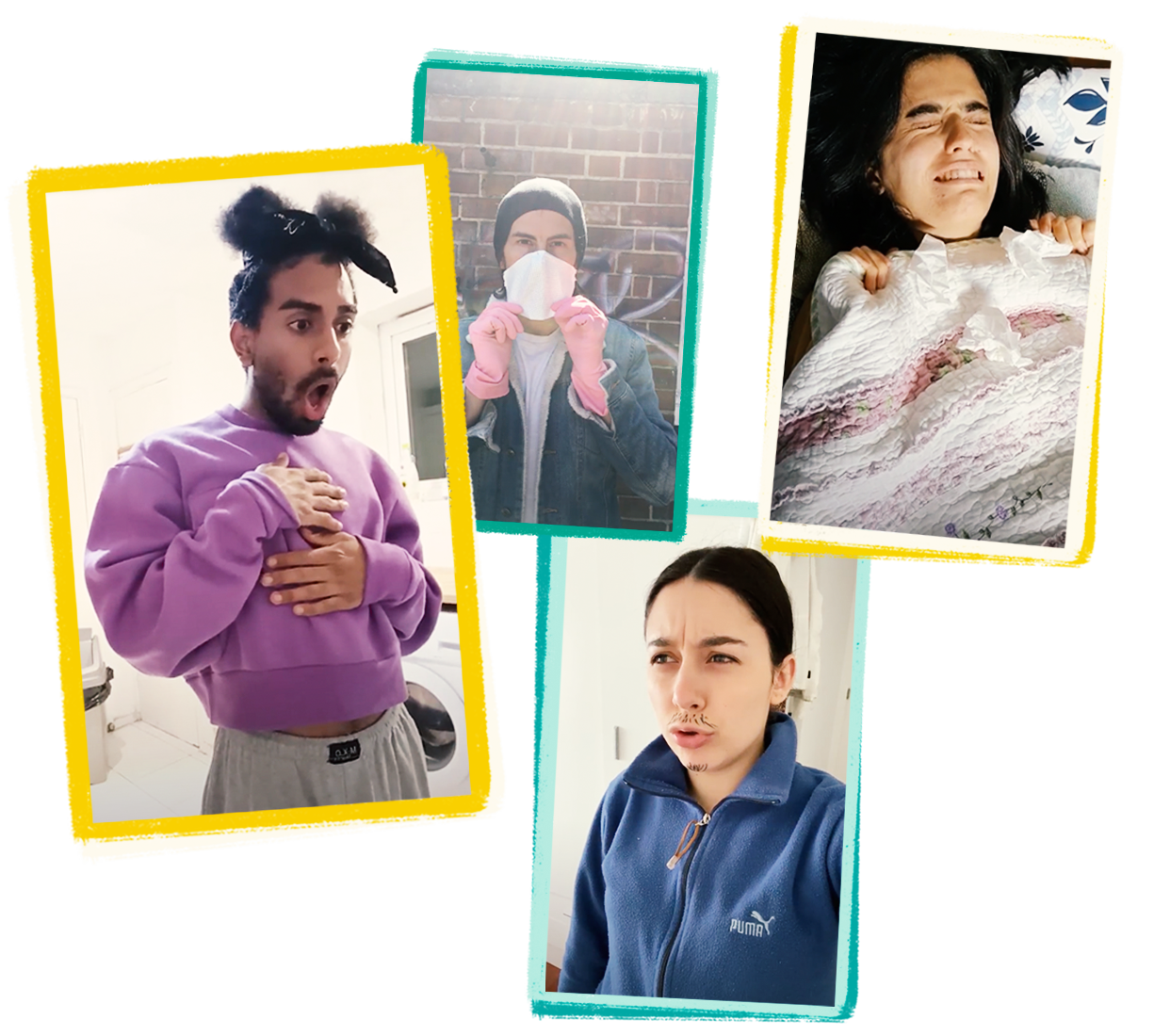Immersion-based learning means learning a language in the most natural and authentic way possible. Immersion is a fantastic way to learn a language, because it allows you to truly experience almost all aspects of life in the language you’re learning.
It’s also fair to say that immersion seems to be the holy grail of language learning.
It’s the key to being successful. “Just jump in and immerse yourself in the language!” Easy, right?
Not necessarily. For one, we’re currently unable to experience total immersion for language learning as we’re not able to travel to another country to truly get a first-hand experience of authentic Spanish culture. (Thanks, COVID). Add to that the hundreds of different podcasts, apps, youtube videos and books that are thrust at you when you start to learn and immersion becomes more of a confusing pain than a useful concept.
But immersion is the best way to learn a language. Read on to find out more!
What is immersion language learning?
Immersive language learning usually means learning a new language in the most natural way possible. In practice, it would mean living in the country where the language is spoken. However, as this isn’t currently an option, it’s necessary to find other ways to immerse yourself. Immersion language learning can also be considered as interacting with the world through said language.
What are the benefits of immersive learning?
There are several benefits to learning a language through immersion. When you learn Spanish, you can interact with native Spanish speakers and constantly develop proficiency by adding new vocabulary and contexts to your understanding. With immersion, you have access to authentic Spanish because you’re exposed to native speakers and different contexts (just like in the Memrise app!)

Immersion vs Submersion: The immersion approach is a far better way of learning when compared with the submersion approach. Immersing yourself into a language means that you’ve got tools, tips and tricks to support you when it comes to learning the language and culture. Submersion, on the other hand, would plunge you in at the deep end with no resources or support.
How NOT to immerse yourself
Did you know there’s actually a wrong way to immerse yourself, especially if you’re a beginner in the world of Spanish language learning? Read on to find out more.
Throwing yourself into Spanish grammar with a complicated novel
On paper (pardon the pun), reading a Spanish novel seems like a great way to immerse yourself. Yet unless you pick up a child’s picture book, you’re bound to be met with long and winding Spanish phrases in the past tense or come across some challenging vocabulary. This would turn even the biggest language enthusiast off of learning Spanish.

In fact, studies have shown that diving into grammar (and as such, the theoretical reasoning behind why words and sentences are formed the way that they are) too early can actually slow down your progress. We’re not saying that you should never pick up a paperback, but there are better ways to introduce yourself to Spanish vocabulary and grammar as a beginner.
Setting your gadgets to another language
Hear us out. If you’re already familiar with a language then this might be a good extra step to further get used to it. But if you’re just starting out with Spanish, being faced with “este accesorio puede no ser compatible” and trying to work out what it means will merely waste your time (though, newsflash: you need a new phone charger).
In other words, we’re not entirely against changing the language on your phone or laptop, but we are against things that end up wasting our time and unnecessarily complicating our lives. If you want to experience full digital immersion, why not find a blog or a podcast on a topic you enjoy, and experience learning Spanish that way?
Ignoring your interests
Leading on nicely from the point above, don’t ignore what you’re interested in in your native language! It might be cooking, Star Wars, powerlifting or skincare routines.

If you enjoy the topic, try to seek it out in your Spanish. It’s much more likely that you’ll remain engaged in a topic that you’re already familiar with. We encourage you to immerse yourself in content you actually enjoy. Don’t force yourself to find an online magazine about the Spanish economy if you’re not interested in economics anyway! Save learning about new topics when you’ve got the basics of a language on lock.
So, how does immersion help to learn Spanish?
Glad you asked. The key to immersing yourself effectively is surrounding yourself with Spanish content that’s just a touch above your level. Of course, in a world where COVID isn’t a reality, we’d encourage you to travel and experience as much as you can in your country of choice. That’s not possible right now, but that’s okay. We’ve got thousands of videos of native Spanish speakers set up to save the day. If you’ve used us before, you’re probably familiar with them, but if you haven’t, let us tell you about why they work best for immersing yourself in a new language!
Learn with Locals is crafted to recreate the experience you get when you’re living in Spain, instantly immersing you in the language you’re trying to learn. It’s made up of thousands of bite-sized clips of people using real language in context, exactly like you’d come across in the country. All our ‘locals’ have variety, personality and fun, again, exactly like you’d meet while living or travelling abroad.
Think of these videos as a way of bringing Spain (or, Japan, France, Russia, or Germany and the languages and cultures!) to you. It’s the next best thing to hopping on a plane and taking yourself there. It allows you to immerse yourself in Spanish from your sofa - and while you do this, as if by magic, you’ll find yourself learning.
Okay, sounds great. Why do these Spanish videos work? Again, we’re glad you brought it up!
Immersion helps you to learn because it speaks to the heart, not just the brain.
Humans are emotional by nature. We’re not robots (not yet, anyway!) and really, we’re all learning languages for the same underlying reason: to connect more deeply with people and their cultures, to be able to understand and be understood by others.
Learning a language through immersion allows you to directly connect to people and their culture. Watching them, even virtually, fills you with motivation and the drive to get more meaningful and memorable connections, so you learn faster and with less effort. Compare this with more traditional learning techniques (think textbooks and worksheets) and you can immediately see the difference: zero personality, zero connection and a whole load of robotic processes.
Gesture, tone and context are all part of the deal
If you think about it, Spanish (and all languages) aren’t just made up of words. Yeah, it’s deep for a blog post. But gestures, intonation and social context are key to understanding, not to mention facial expressions, emotions and tone of voice. Think back to language lessons at school. Remember the monotonous, crackly-voiced tapes in Spanish exams? They strip away all of the important dimensions of communication from the language you were taught. Undoubtedly, this leaves you feeling confused about what you’ve heard and fed up with learning.
We wanted to make sure this wasn’t the case. The Spanish Learn with Locals videos include clear subtitles, translations, and the ability to like and rewatch each bite-sized clip. We’d even go so far as to say it’s better for your Spanish language learning than the real thing: replaying the video as many times as you like is something that real-world immersion lacks.
You learn Spanish as it’s truly spoken
This sounds like an obvious statement, but traditional learning methods use simplified and often unrealistic sentences in order to teach certain vocabulary or grammatical structures. Back to the robotic Spanish exam tapes: “the yellow crocodile ate the egg” or “Jack stands in front of the house with six apples”. Honestly, the language teaching you received back then is, to quote a certain orange US former president, fake news. This “fake” teaching leads to skills you can’t use in the real world, and what’s the point in that?
Immersing yourself in Spanish in this way helps you learn your next language like you did your first: with real-world speed, vocabulary, idioms, accents, and more - you’re experiencing the real thing, so you learn how to speak real Spanish.
Learning Spanish with Memrise is crafted to bring all the richness, fun, variety, humour and beauty that you’d experience living or travelling abroad. Memrise is an immersive learning app, and we’d love you to get involved and start learning Spanish. Want more info on learning Spanish? Head to our Spanish learning homepage.









